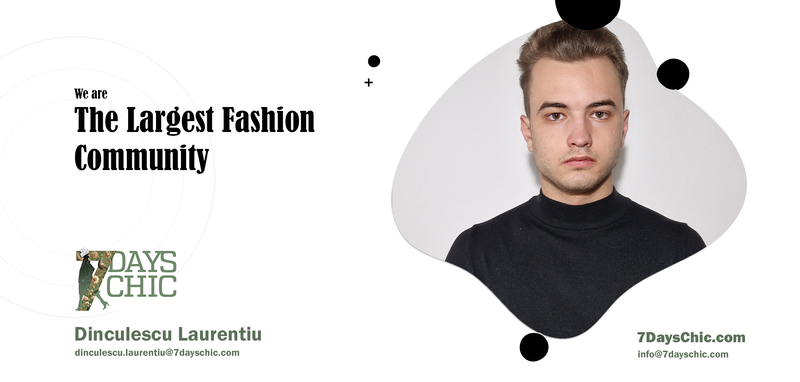7. Analytics and Growth
Tracking Engagement Metrics
Tracking key metrics such as likes, shares, comments, and reach is essential for understanding how your content performs. These metrics help assess what resonates with your audience and what doesn’t. Metrics like click-through rates (CTR) are particularly useful for understanding the effectiveness of your calls-to-action. Additionally, bounce rates and pageviews give insights into how engaging your website or landing pages are for users. To gain deeper insights, tools like Google Analytics and platform-specific dashboards (Instagram, Facebook) are highly effective for monitoring and optimizing these metrics.
An Instagram model can use engagement metrics to enhance their profile in several ways. By analyzing likes, shares, and comments, the model can identify which types of posts resonate most with their audience, allowing them to focus on creating similar content to boost engagement.
Tracking reach and impressions can help determine the best times to post, ensuring regular posts during peak engagement times increase visibility. Monitoring click-through rates (CTR) on promotional posts helps refine calls-to-action, ensuring they effectively drive traffic to their website or collaborations.
Metrics can also reveal demographic information about followers, allowing the model to tailor content to better fit their audience’s interests and preferences. Keeping an eye on follower growth trends enables the model to identify successful campaigns or partnerships, allowing them to replicate effective strategies in the future.
Leveraging Platform Analytics
Each platform, such as Instagram, TikTok, and Facebook, offers specific analytics that can be leveraged to improve your strategy. For example, Instagram tracks engagement metrics such as impressions and reach, while TikTok offers insights into video views and follower growth. Diagnostic and predictive analytics go beyond basic metrics, helping to explain why certain content performs well and predict future trends.
Real-time analytics are essential for making quick adjustments during live campaigns, while demographic insights help tailor content to specific audience segments. By comparing performance across platforms, models can refine their approaches to maximize impact. Regularly reviewing analytics fosters a culture of continuous improvement, empowering models to make informed decisions that boost visibility and follower growth.
Follower Growth Techniques
Organic strategies for follower growth focus on creating valuable and shareable content, as well as engaging consistently with your audience. Methods like social listening—tracking online conversations about your brand or industry—can help tailor content to audience preferences. Encouraging interaction through contests, challenges, or user-generated content also builds organic growth. Additionally, identifying the right platforms and understanding where your target audience is most active helps in optimizing growth efforts.
Effective follower growth techniques for models:
- Post High-Quality, Shareable Content
- Engage with Your Audience
- Social Listening
- Collaborate with Other Creators
- Contests and Challenges
- User-Generated Content
- Leverage Hashtags
- Utilize Stories and Live Features
- Cross-Promotion on Different Platforms
- Stay Consistent
Paid Advertising and Boosted Posts
Paid advertising is useful for boosting visibility when organic reach plateaus. Tools like Facebook Ads or Instagram’s Boost feature allow you to target specific demographics, behaviors, and interests, ensuring that your content reaches the most relevant audience. Monitoring the performance of these ads through metrics like conversion rates and click-through rates helps refine your strategy. Regular testing and adjusting based on analytics help maximize the return on your ad spend.
Paid advertising and boosted posts provide models with strategic tools to enhance visibility and reach a broader audience. By targeting specific demographics, they can ensure their content resonates with individuals likely to engage with their work. Boosting high-performing posts amplifies exposure for key portfolio pieces or collaborations.
Paid ads allow for A/B testing of different content types, helping refine marketing strategies based on performance metrics like conversion rates. This data-driven approach empowers models to focus on high-performing campaigns and build their personal brand by showcasing their unique style. Additionally, ads can drive traffic to other platforms, creating a more comprehensive online presence. Seasonal promotions can further capitalize on current trends, attracting new followers and driving engagement.
8. Collaborating with Brands and Agencies
Tagging Brands in Posts
Tagging relevant brands and companies in your posts increases the visibility of your content and shows that you’re already using or endorsing their products. Brands often search for user-generated content they can share or repost, which can lead to organic collaborations. It’s a great way to get noticed by potential partners. Consistent tagging also signals to the brand that you’re a genuine user of their products, which can boost credibility when pitching for partnerships.
How can models use tagging brands to their advantage?
Models can effectively leverage tagging brands in their posts to enhance visibility and create opportunities for collaborations. Here’s how they can do this:
- Showcase Brand Partnerships: Tag brands they are currently working with or frequently use. This promotes the brand and highlights their professional relationships.
- Utilize Hashtags: Using relevant hashtags alongside brand tags can increase the chances of their posts being discovered by a wider audience, including brand representatives.
- Engage with Brand Content: Actively engage with brands by liking, commenting, and sharing their content. This interaction can encourage brands to notice their profiles and consider them for future collaborations.
- Highlight Products in Action: Create content that features brand products in real-life scenarios, such as outfits worn during a shoot or lifestyle moments, to show how they integrate the products into their daily lives.
- Build a Portfolio of Brand Collaborations: Consistently tagging and collaborating with various brands can help models build a portfolio that showcases their versatility and appeal to potential partners.
- Network with Other Influencers: Tagging and interacting with other models or influencers who work with the same brands can foster networking opportunities, leading to joint collaborations or projects.
- Create Authentic Content: Focus on creating authentic and high-quality content that resonates with both their audience and the brand’s target market. Genuine endorsements are more likely to be recognized and appreciated by brands.
- Track Engagement: Monitor the engagement on posts where brands are tagged to understand which partnerships resonate most with their audience, informing future collaboration strategies.
- Pitch Collaborations: Use a strong track record of tagged posts and engagement with brands as leverage when pitching for potential partnerships, demonstrating their genuine interest and existing relationship with the brand.
- Stay Consistent: Regularly tagging brands in posts can help models stay on the radar of those brands and increase their chances of being approached for official partnerships.
Sponsored Content and Paid Collaborations
Sponsored posts involve creating content for a brand in exchange for compensation or free products. It’s important to carefully navigate influencer contracts, which typically outline content deliverables, deadlines, and usage rights. Clear communication with the brand about expectations helps avoid issues later on. Platforms like Instagram have built-in features to disclose partnerships, which is required for compliance with advertising regulations.
How can models use sponsored content to their advantage?
Models can strategically use sponsored posts to enhance their careers and build relationships with brands. Here are some ways they can leverage sponsored content to their advantage:
- Monetize Their Platform: By partnering with brands for sponsored posts, models can generate income and receive free products. This creates an additional revenue stream, especially for those building their influence.
- Expand Their Reach: Sponsored posts often reach a broader audience, particularly if the brand has a significant following. This exposure can lead to increased visibility for the model, attracting more followers and potential collaborations.
- Enhance Professional Credibility: Successfully completing sponsored posts demonstrates professionalism and reliability, which can enhance a model’s reputation in the industry and make them more appealing to future brands.
- Showcase Personal Style: Sponsored content allows models to showcase their personal style while promoting products. This authentic representation can resonate with their audience, making the sponsored posts feel genuine.
- Develop a Portfolio: Models can create a diverse portfolio of sponsored content that highlights their ability to work with various brands. This showcases their versatility and can attract more brands looking for collaboration.
- Communicate Effectively: Clear communication with brands about expectations, content deliverables, and deadlines ensures that both parties are aligned.
- Utilize Compliance Features: Using platform features to disclose partnerships shows transparency and compliance with advertising regulations. This builds trust with their audience and enhances their professional image.
- Engage with Followers: Sponsored posts provide an opportunity for models to engage with their audience by encouraging feedback or discussions about the products they promote. This interaction fosters a sense of community and loyalty.
- Analyze Engagement: Monitoring the performance of sponsored posts can provide valuable insights into what content resonates with their audience. This data can inform future collaborations and content strategies.
Negotiating Rates for Sponsored Posts
Understanding your value is key when negotiating rates for collaborations. Rates depend on factors such as follower count, engagement rates, and content quality. Micro-influencers (those with smaller, highly engaged audiences) can often charge more than influencers with larger but less engaged followings. Using tools like Social Bluebook can help estimate fair rates based on your audience size and engagement. When setting rates, consider what’s involved in the creation process—photography, video editing, and travel, for instance. Being transparent about these costs helps in negotiating a fair compensation package.
How can models negotiate rates to their advantage?
Models can effectively leverage their understanding of negotiating rates for sponsored posts to maximize their earning potential and build fruitful partnerships. Here are several ways they can do this:
- Know Your Worth: Models should assess their value based on follower count, engagement rates, and the quality of their content. Understanding what they bring to the table helps in setting appropriate rates for collaborations.
- Leverage Micro-Influencer Advantage: Micro-influencers often have highly engaged audiences, which can be more valuable to brands than sheer follower numbers. Models can emphasize their engagement rates when negotiating, potentially allowing them to command higher rates.
- Utilize Rate Estimation Tools: Tools like Social Bluebook can provide insights into fair compensation based on audience size and engagement metrics. Models can use this data to support their rate proposals during negotiations.
- Factor in Creation Costs: When setting rates, models should consider all aspects of the content creation process, including photography, video editing, and any necessary travel. Being transparent about these costs can help justify higher rates and ensure fair compensation.
- Communicate Value to Brands: Models can highlight the benefits they offer to brands, such as their unique style, audience demographics, or previous successful collaborations. This can strengthen their position during negotiations.
- Be Flexible: While it’s important to have a clear idea of their worth, being open to negotiation can lead to better long-term relationships with brands. Models should be willing to discuss rates and find mutually beneficial terms.
- Create a Rate Card: Developing a rate card that outlines standard fees for various types of collaborations (e.g., posts, stories, reels) can streamline the negotiation process. This gives brands a clear understanding of costs upfront.
- Track Performance: Keeping records of engagement and performance from past sponsored posts can provide evidence of their value in negotiations. Demonstrating successful past collaborations can justify their rate requests.
- Stay Professional: Maintaining a professional demeanor during negotiations fosters respect and can lead to better outcomes. Clear communication and prompt responses contribute to a positive negotiation experience.
Building a Portfolio via Social Media
A well-curated Instagram feed or TikTok page can act as a portfolio showcasing your versatility as a content creator or model. By consistently producing high-quality visuals, you can demonstrate to potential clients or agencies that you have a wide range of styles. Building a strong modeling portfolio through social media involves several strategic steps that can help showcase your talent, attract attention, and connect with potential clients and agencies.
How can models build social media portfolios to their advantage?
- Use High-Quality Images: Ensure that your photos are professional and highlight your best angles and expressions. Invest in professional photography to capture your versatility and appeal.
- Showcase Your Range: Include a variety of styles in your portfolio, such as editorial, commercial, and lifestyle shots. This diversity will demonstrate your ability to adapt to different modeling genres.
- Engaging Captions: Pair your images with creative and engaging captions that reflect your personality and invite interaction. Asking questions or sharing insights can help boost engagement, which is key for gaining visibility.
- Utilize All Features of the Platform: Make use of Instagram Reels, stories, and posts to display your modeling skills. Video content often garners more engagement than static images.
- Networking: Use social media to connect with photographers, brands, and other models. Tag everyone involved in your shoots to expand your reach and visibility.. Don’t hesitate to reach out directly to brands you admire for potential collaborations.
- Keep It Updated: Regularly refresh your portfolio with new images and remove outdated ones. This not only reflects your current look but also shows that you’re actively working and evolving as a model.
- Create a Dedicated Portfolio Website: Consider building a professional website to house your modeling portfolio. This can provide a more comprehensive view of your work and serve as a platform for additional content like blog posts or behind-the-scenes footage.
- Professional Headshots: Include clear, high-quality headshots in your portfolio. These should be versatile and represent your natural look, as they are often the first impression clients will have.
9. Staying Authentic and Sustainable
Avoiding Social Media Burnout
Balancing your online presence with personal well-being is crucial. Some key tactics include setting clear boundaries with your work hours, scheduling content in advance, and silencing notifications to take real breaks. Prioritizing fun and personal activities before work can help maintain your mental health. Regular self-care like exercise, journaling, and spending time with supportive friends can also be beneficial.
Models can maintain a balanced online presence by focusing on strategies that emphasize their physical and mental wellness alongside their career. These include:
- Limiting online time
- Setting specific times for social media engagement
- Also focusing on other hobbies and family
- Prioritizing offline activities like exercise
- Practicing mindfulness
- Engaging in meaningful social interactions
- Taking regular digital breaks
- Keeping social media use intentional
Authenticity in Content Creation
Maintaining your authentic voice is essential for long-term success. It’s important to stay true to your brand and avoid overextending yourself to keep up with trends that don’t align with your values. Repurposing existing content rather than constantly creating new posts can help prevent burnout while ensuring you maintain consistency in your message.
A model can maintain authenticity by centering their content around personal style and core values, rather than shifting to match every trend. Selecting themes and ideas that resonate personally can make sharing more natural, while repurposing favorite or timeless content—such as re-editing past shoots or highlighting behind-the-scenes moments—keeps engagement fresh without the constant need for new material. This approach reinforces consistency, allowing them to stay connected with their audience without compromising personal identity.
Sustainability in Fashion Choices
Promoting eco-friendly and ethical fashion means being intentional about the brands you choose to support and sharing the deeper purpose behind those choices. By actively engaging with sustainable brands, you can highlight the values these companies represent—such as reduced environmental impact, ethical labor practices, and quality over quantity—which adds depth to your content and creates awareness. Sharing stories about the people and processes behind each piece provides followers with a transparent view of the positive impacts of eco-conscious fashion. Furthermore, offering tips on how they can incorporate sustainability into their own wardrobes and encouraging them to make mindful fashion choices fosters a community centered around responsibility and lasting change. This approach not only strengthens your brand’s authenticity but also positions you as a trusted advocate for sustainability, inspiring your audience to consider the impact of their own fashion decisions.
10. Legal and Privacy Considerations
Intellectual Property Rights (IPR) in the Digital Age
The shift to a digital economy has intensified challenges in protecting IP. Content creators face threats like unauthorized distribution of copyrighted material and digital piracy, especially on online platforms. To combat this, technological solutions such as Digital Rights Management (DRM) and content recognition algorithms help identify and restrict access to unauthorized users. Legal frameworks, like the World Intellectual Property Organization (WIPO) and the Anti-Counterfeiting Trade Agreement (ACTA), enforce copyright laws across borders, but they depend heavily on international cooperation.
To further protect IPR, decentralized solutions like blockchain can track content provenance and establish clear records of ownership, which can be essential for proving copyright in disputes. Artificial intelligence continues to advance in content authentication and watermarking, providing additional layers of protection for original works.
For models, digital watermarks act as a personalized “signature” embedded within images or videos, making it easier to identify and claim ownership in case of unauthorized use. Watermarks are often subtle but unique identifiers that can deter digital piracy while preserving the visual appeal of content. By working with agencies that employ blockchain verification, models add an additional layer of security; blockchain technology creates a decentralized, tamper-proof record of each original piece of content, recording its creation date, ownership, and any transfers. This means that if a photo or video is copied, misused, or altered, the blockchain can verify the model’s rights to the original, providing stronger grounds for legal recourse.
Moreover, blockchain’s transparency allows models to trace where their images circulate, offering insights into how and where their content is used globally. By combining watermarks with blockchain, models protect their brand and control their intellectual property. These methods also build trust with brands and followers, showing a commitment to professionalism and ethical content use while reinforcing their credibility in the industry.
Protecting Privacy Online
With the increase in data sharing across platforms, individuals need to be cautious about privacy. For influencers and content creators, oversharing personal information can increase vulnerability to privacy breaches and identity theft. Managing privacy settings on social media and implementing encryption technology are effective ways to mitigate these risks.
As digital spaces become increasingly interconnected, protecting personal data requires proactive, layered security strategies. Aside from encryption, emerging AI-driven privacy tools can now detect and alert users to potential breaches or leaks in real time, empowering creators to act quickly if their information becomes compromised. Additionally, personal data anonymization techniques can allow creators to engage and grow an audience without exposing sensitive details.
Models, in particular, can benefit from using privacy-conscious platforms and limiting geotagging to avoid revealing their location. They can also adopt pseudonyms or stage names online to maintain some anonymity, separating personal life from their public persona while still building a professional brand.
11. Case Studies and Success Stories
Examples of Models Who Excelled via Social Media
Charli D’Amelio, originally a TikTok sensation, used her platform to expand beyond dancing into the world of modeling and brand deals. Her collaboration with brands like Takis and numerous other campaigns has shown how influencers can transition to traditional media and modeling success.
Bella Hadid built a significant following on Instagram, where her candid posts and behind-the-scenes content from fashion shoots helped her amass a huge audience. This social media presence reinforced her status as a top model and contributed to her major partnerships with brands like Dior and Calvin Klein.
Gigi Hadid Like her sister Bella, Gigi Hadid gained massive popularity through Instagram, where she regularly shares fashion, lifestyle, and behind-the-scenes content. This engagement has solidified her partnerships with brands like Tommy Hilfiger and Reebok, further propelling her modeling career.
Emily Ratajkowski used Instagram to build a massive following by posting personal and professional content, including fashion shoots and lifestyle photos. Her large online presence allowed her to create a direct connection with her audience, leading to modeling contracts with major brands and a growing career as an actress and entrepreneur.
Winnie Harlow Discovered on “America’s Next Top Model,” Winnie Harlow leveraged Instagram to share her journey in the fashion industry and challenge conventional beauty standards, gaining millions of followers. Her strong presence on social media caught the attention of brands like Fendi and Tommy Hilfiger, leading to multiple modeling campaigns.
Cara Delevingne Although she was already a well-known model, Cara Delevingne has expanded her influence through social media, particularly Instagram. With her posts on modeling, acting, and personal causes, she maintained strong relationships with luxury brands like Chanel and Burberry.
Ashley Graham Ashley Graham, a plus-size model, has used Instagram to advocate for body positivity, empowering women worldwide. Her posts about body confidence resonated with a large audience, earning her partnerships with brands such as Swimsuits for All and Lane Bryant, among others.
Analyzing Successful Social Media Campaigns:
1. Calvin Klein’s #MyCalvins Campaign
The #MyCalvins campaign is a perfect example of how leveraging influential models can boost a brand. Initially featuring models like Kendall Jenner and Justin Bieber, the campaign went viral, as social media users from all walks of life began participating by posting photos in their Calvin Klein apparel. This user-generated content and influencer-driven promotion allowed Calvin Klein to reach younger demographics through platforms like Instagram and TikTok.
2. Fenty Beauty x Slick Woods
When Rihanna launched Fenty Beauty, she collaborated with model Slick Woods, known for her unique look. Woods became the face of the campaign, representing diversity and inclusivity, which aligned with the brand’s core message. The campaign was a major success, gaining huge traction on social media due to Woods’ massive following and Fenty’s innovative approach to beauty.
3. Burberry x Cara Delevingne
Burberry’s collaboration with Cara Delevingne exemplifies the power of celebrity influence on social media. Cara’s posts related to the brand’s campaigns consistently garnered millions of engagements, driving significant traffic to Burberry’s online store. This cross-promotion increased Burberry’s reach among younger audiences and contributed to a 200% increase in the brand’s social media following during the campaign.
4. Balmain x Olivier Rousteing and “Balmain Army”
Balmain’s creative director Olivier Rousteing used his network of models, including Kendall Jenner and Gigi Hadid, to form the “Balmain Army”, a group of influencers who promoted the brand heavily on social media. By strategically partnering with these influencers, Balmain saw an enormous spike in engagement, making the brand highly visible and relevant among millennials. This collaboration grew Balmain’s digital presence and solidified its position in the high-fashion social media space.
5. Tommy Hilfiger x Gigi Hadid
Gigi Hadid’s collaboration with Tommy Hilfiger led to the creation of the “Tommy x Gigi” collection, which was heavily promoted on social media. Gigi’s influence drove the success of the campaign, with followers posting about the collection and attending pop-up shops. The campaign boosted Tommy Hilfiger’s brand visibility online, especially among younger, fashion-conscious audiences.
6. Dior x Bella Hadid
Bella Hadid has been a key figure in Dior Beauty‘s campaigns. The collaboration, particularly focused on promoting Dior’s makeup lines, was massively successful due to Bella’s extensive social media following. Dior effectively utilized her Instagram reach to introduce their products to a younger, more engaged audience. Her posts, which blended her glamorous lifestyle with Dior’s luxury brand image, helped drive high levels of engagement and sales.
7. Hailey Bieber x BareMinerals
Hailey Bieber has played a key role in the success of BareMinerals through her collaborations with the clean beauty brand. As a brand ambassador, Hailey regularly posted content featuring BareMinerals products, particularly emphasizing their clean, eco-friendly formulas. Her influence on Instagram and other platforms, where she shares skincare tips and makeup routines, has been vital in helping the brand reach a younger, health-conscious audience. The collaboration not only boosted BareMinerals’ online presence but also led to increased product sales.
Continue Reading:
Effective Social Media Strategies for Models / Part 1
Effective Social Media Strategies for Models / Part 2
Effective Social Media Strategies for Models / Part 3
Written by Dinculescu Laurentiu




Add a Comment